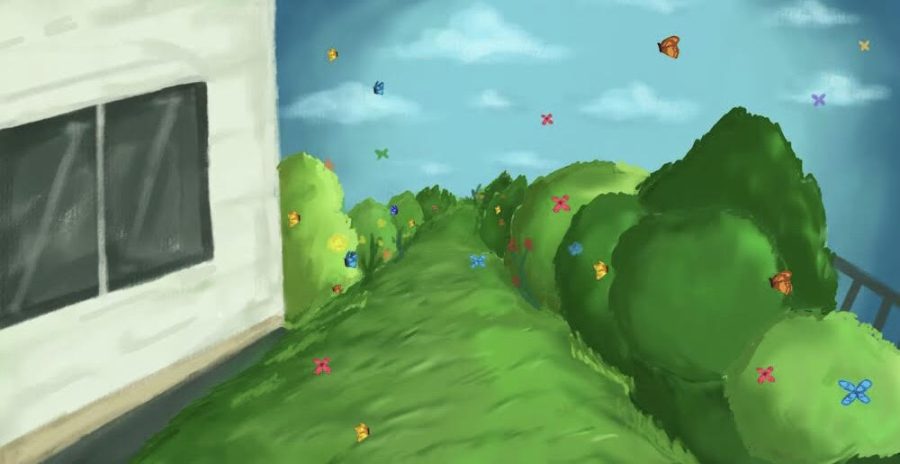Science class inspires biodiversity outside Lyceum
February 11, 2022
Native plants and flowers will possibly be introduced to the basin behind the Lyceum in a proposal completed by Advanced Placement (AP) Environmental Science (APES) students in Science Teacher Lisa Pavic’s class. The students worked collectively to research and present a proposal that awaits approval from South’s administration.
Students learned AP curriculum through project-based learning, using the material they had learned in class to help them create the proposal, Pavic said. The College Board creates an AP curriculum to allow students to use interactive projects, such as the Lyceum proposal, to learn the material in new ways, Pavic said.
“A typical day [in class] involves lectures, research, or laboratories based in the context of the project that leads to an understanding of APES topics,” Pavic said. “Our final products are meant to be shared and presented with audiences that may include their families, each other, and even our administration.”
To complete the work needed for the proposal, the students were divided up into small groups to prepare a formal presentation, and then worked together as a whole class to refine the finished result, Pavic said. The small groups focused on individual aspects of the ecosystem relevant to the project, such as native plant species, soil, and water quality, senior Ella Wozniak explained. Seeing the class work together and present their finished product to the board was rewarding, Pavic said.
“The opportunity to observe students collaborating as one unit for a common purpose was one of my most inspiring moments as an instructor,” Pavic said. “They provided constructive feedback, revised within deadlines, and presented professionally to our administration.”
Students received assistance from Doug Dewitt, a landscape restoration architect contractor for South, Pavic said. Dewitt helped the class reach a final project design after sharing which ideas would be too expensive or take too much time to complete, and how to best increase biodiversity.
“[Dewitt] gave advice that increasing biodiversity with native species is truly the best way to sustain ecosystems in our area,” Pavic said. “[He said that] even small patches of land will provide habitat to pollinators, plants, and other consumers.”
After extensive in-class research and planning, the details of the project came together through student ideas and expert input, senior James Noyes said. The entire class discussed what was worth including in the plan, and collaborated to create a slideshow to propose their final ideas, Noyes said. Pavic and Dewitt’s involvement in the process was important and helped transform the students’ plan into a viable one.
“Both [Pavic and Dewitt] really helped stabilize and ground our planning,” Noyes said. “Without them, we would have ended up with a wild proposal.”
A decision on the proposal is likely to be reached in the spring when the district budget is laid out in detail and finished, Pavic said. If the project is approved by the school administration, restoring the basin would take place over multiple years, Pavic said. In order to maintain the ecosystem, students and experts would contribute each year, giving future APES students an opportunity to engage in their local environment for years to come.
“I know [the students] were proud of themselves for their accomplishments,” Pavic said. “Learning APES topics in this manner, with a purpose, I hope provides a deeper understanding and appreciation.”



